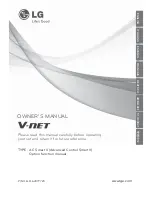
4
OPTICAL SPA-BUS
SUBSTATION LEVEL
DATA COMMUNICATOR
CONNECTION
TO NETWORK
CONTROL LEVEL
FEEDER TERMINAL
FEEDER TERMINAL
FEEDER TERMINAL
FEEDER TERMINAL
The feeder terminals type SPAC 315 C and
SPAC 317 C are designed to be used as cubicle-
oriented protection and local/remote control
interface units. In addition to protection, con-
trol and measurement functions the feeder ter-
minals are provided with the data communica-
tion properties needed for the control of a feeder
cubicle. Connection to higher level substation
control equipment is carried out via a fibre-
optical serial bus.
Fig. 1. Distributed protection and control system based on feeder terminals type SPAC 315 C and
SPAC 317 C.
Regarding operational features the feeder termi-
nals type SPAC 315 C and SPAC 317 C are
identical. The only difference between the two
types is the rated current of the earth-fault
protection unit, see table below.
Type
Rated energizing currents
OC unit
EF unit
SPAC 315 C
1 A, 5 A
1 A, 5 A
SPAC 317 C
1 A, 5 A
0.2 A, 1 A
The feeder terminals are intended for the selec-
tive short-circuit and earth-fault protection of
radial feeders in solidly earthed, resistance earthed
or impedance earthed power systems. The short-
circuit and earth-fault protection is achieved by
means of a combined overcurrent and earth-
fault relay module.
The control module included in the feeder
terminal indicates locally by means of LED
indicators the status of 1 to 3 disconnectors or
circuit breakers. Further the module allows sta-
tus information from the circuit breaker and the
disconnectors to be transmitted to the remote
control system, and one object, e.g. a circuit
breaker, to be opened and closed via the remote
control system. Single pole or double pole cir-
cuit breaker control can be used. The status
information and the control signals are trans-
mitted over the serial bus. Local control of one
object is possible via push-buttons on the front-
panel of the control module.
The control module measures and displays the
three phase currents. The active and reactive
power are measured over two mA-inputs. Exter-
nal measuring transducers are needed. Energy
calculations can be based on the measured power
values or on using one binary input as an energy
pulse counter input. The measured values can
be displayed locally and remotely as scaled val-
ues.
The protection relay module also measures and
records the three phase currents and the neutral
current. All the measured and recorded values
can be displayed locally and transmitted to the
remote control system over the SPA bus.
Area of
application





































